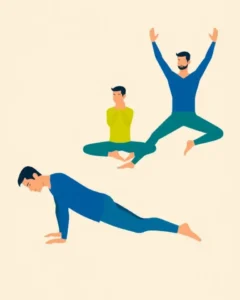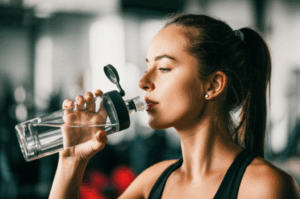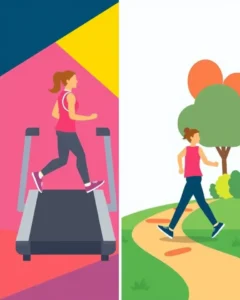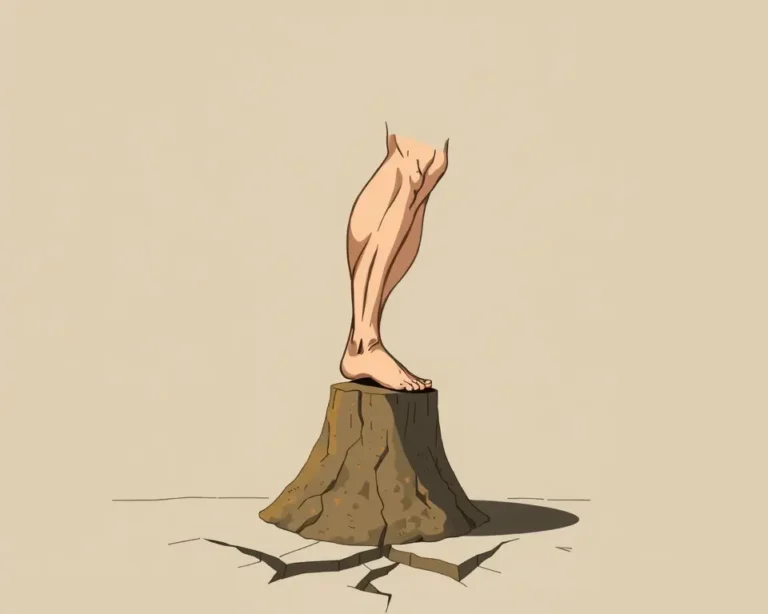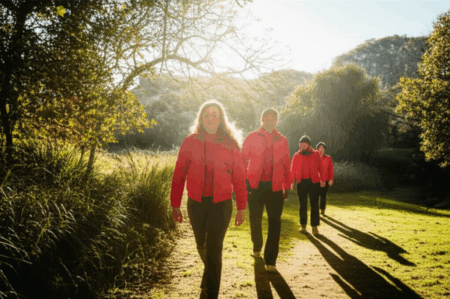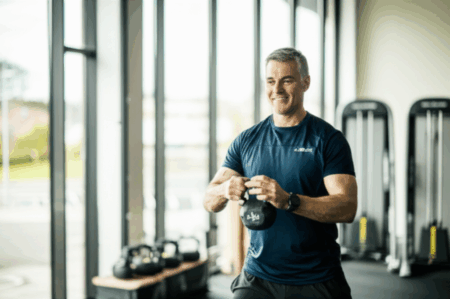As runners, we often focus on legs, but sometimes calves do not get the love they deserve. Strong calves are essential for efficient running, injury prevention, and improved performance. Physical therapists agree that incorporating specific calf exercises into your routine can make a significant difference. This article will explore four calf exercises that every runner should include in their gym routine, as recommended by physical therapists.
Why Calves Matter for Runners
Calf muscles play a crucial role in running. They are responsible for plantarflexion of the foot and ankle, which is the movement that propels you forward. Calf muscles also help control foot pronation and absorb impact. Weak or tight calf muscles can lead to various issues, including:
- Reduced ankle mobility and stability: Weak calves can compromise your ankle’s ability to handle load and stabilize during running.
- Increased risk of injuries: Calf strains, Achilles tendinitis, plantar fasciitis, and shin splints are common injuries associated with weak or tight calves.
- Decreased running efficiency: Strong calf muscles contribute to better running mechanics, leading to improved speed and endurance.
Calf Anatomy 101: Understanding the Key Players
Before diving into the exercises, it’s essential to understand the anatomy of the calf muscles. The primary muscles in the calf complex are:
- Gastrocnemius: This is the larger, more visible calf muscle. Because it crosses both the knee and ankle joints, it assists in knee flexion and plantar flexion. The gastrocnemius is responsible for generating power during push-off and is most active during explosive movements like sprinting.
- Soleus: Located beneath the gastrocnemius, the soleus primarily contributes to plantar flexion. It plays a vital role in maintaining balance, stability, and proper alignment during running. The soleus is composed of slow-twitch muscle fibers, making it well-suited for endurance activities.
- Plantaris: This long, thin muscle runs alongside the gastrocnemius. While its function is not entirely understood, it’s thought to assist with plantar flexion and knee flexion.
The Four Calf Exercises for Runners
According to physical therapists, these four exercises should be included in every runner’s gym routine:
1. Standing Heel Raise
The standing heel raise is a classic exercise that targets the gastrocnemius.
- How to do it: Stand with your feet hip-width apart, positioned half on and half off a weight plate or small step. Hold onto a stable surface if needed. Raise your heels off the floor by pushing through your toes. Aim for a one-second lift and one-second lower.
- Sets/Reps: 3 sets of 8-20 reps
- Benefits: Strengthens the gastrocnemius, improving running efficiency and power during push-off. It also helps improve ankle stability and control.
2. Seated Heel Raise
The seated heel raise primarily targets the soleus muscle.
- How to do it: Sit on a bench or chair with knees at roughly 90° angles. Raise your heels by pushing through your toes. Aim for a one-second lift and one-second lower. Use dumbbells or a seated calf raise machine for resistance.
- Sets/Reps: 3 sets of 8-20 reps
- Benefits: Strengthens the soleus, enhancing endurance and stability during long runs.
3. Single-Leg Heel Raise
The single-leg heel raise increases the intensity, challenging the calf muscles and improving balance.
- How to do it: Stand on one leg, positioned half on and half off a weight plate or small step. Hold onto a stable surface if needed. Raise your heel off the floor by pushing through your toes. Aim for a one-second lift and one-second lower.
- Sets/Reps: 3 sets of 8-15 reps per leg
- Benefits: Improves calf strength, ankle stability, and balance. It also helps identify and correct any imbalances between legs.
4. Heel Raise on a Leg Press
This exercise provides a variation to target the calf muscles with a different angle and resistance.
- How to do it: Sit in the leg press machine with your knees straight and your legs hip-width apart. Place the balls of your feet on the edge of the footplate. Press through your toes to lift your heels, then lower them below the level of the footplate. Aim for a one-second lift and one-second lower and maintain even pressure through both legs.
- Sets/Reps: 3 sets of 8-15 reps
- Benefits: Builds calf strength and endurance while providing a stable and controlled environment.
Additional Calf Exercises to Consider
While the four exercises above are a great starting point, here are some other calf exercises that runners can incorporate into their routine:
- Bent-Knee Calf Raise: This variation focuses more on the soleus muscle. Perform it similarly to the standing calf raise, but with a slight bend in your knees throughout the exercise.
- Isometric Calf Hold on Leg Press: This exercise builds strength and endurance. Find a challenging weight on the leg press. Hold your heel off the plate for 6-8 seconds. Perform this 3-4 times on both sides, alternating from left to right. Repeat for 3 rounds.
- Farmer’s Carry on Toes: This exercise combines calf strength, ankle stability, and core endurance. Hold a weight in each hand and lift your heels so you’re standing on your toes. Walk forward in a controlled manner, keeping your core engaged and your heels elevated. Aim for two to four sets of 10 to 20 steps whenever you strength train, or twice a week.
- Plyometric movements: These exercises boost calf power for explosive push-offs, crucial during sprints or navigating hills. Examples include double and single-leg hops.
Tips for Effective Calf Training
To maximize the benefits of calf exercises, keep these tips in mind:
- Warm-up: Before starting your calf workout, perform a dynamic warm-up to prepare your muscles for exercise. This could include calf stretches, ankle rotations, and toe raises.
- Proper form: Focus on maintaining proper form throughout each exercise. Avoid using momentum or compensating with other muscles.
- Progressive overload: Gradually increase the weight, resistance, or reps as you get stronger. This will challenge your muscles and promote continued growth.
- Listen to your body: If you experience any pain, stop the exercise and consult a physical therapist or healthcare professional.
- Consistency: Aim to perform calf exercises at least two to three times per week for optimal results.
- Cool-down and stretch: After your workout, cool down with light cardio and perform static calf stretches to improve flexibility and reduce muscle soreness. Examples include the Straight-Leg Calf Stretch.
Stretching for Calf Flexibility
In addition to strengthening exercises, stretching is crucial for maintaining calf flexibility and preventing injuries. Some effective calf stretches include:
- Gastrocnemius Stretch: Stand facing a wall with one foot slightly in front of the other. Keep your back leg straight and bend your front knee, pressing your back heel into the ground. Hold this stretch for 30 seconds and repeat on the other side.
- Soleus Stretch: Perform the same stretch as above, but with a slight bend in your back knee. This will target the soleus muscle.
- Downward-facing dog: From a plank position, lift your hips up and back, forming an inverted V shape. Keep your spine straight and press your heels towards the ground. Hold for 30 seconds.
Foam Rolling for Calf Recovery
Foam rolling is an excellent way to release tension and improve blood flow to the calf muscles.
- How to do it: Sit on the floor with a foam roller under your calf. Use your hands to support your body and roll back and forth from your ankle to your knee. Spend extra time on any tender spots.
Listen to Your Body
Pay attention to any pain or discomfort you may feel during exercise. If you experience pain, stop the exercise and consult with a healthcare professional.
Integrating Calf Exercises into Your Running Routine
Calf exercises should be part of a comprehensive training plan that includes cardio, strength training, flexibility exercises, and adequate rest. Aim for two strength sessions per week, incorporating calf exercises along with exercises for other muscle groups.
The Final Stride
Incorporating these four calf exercises into your gym routine can significantly improve your running performance and reduce your risk of injury. Remember to focus on proper form, progressive overload, and consistency. With strong and flexible calves, you’ll be well-equipped to conquer any running challenge that comes your way.

